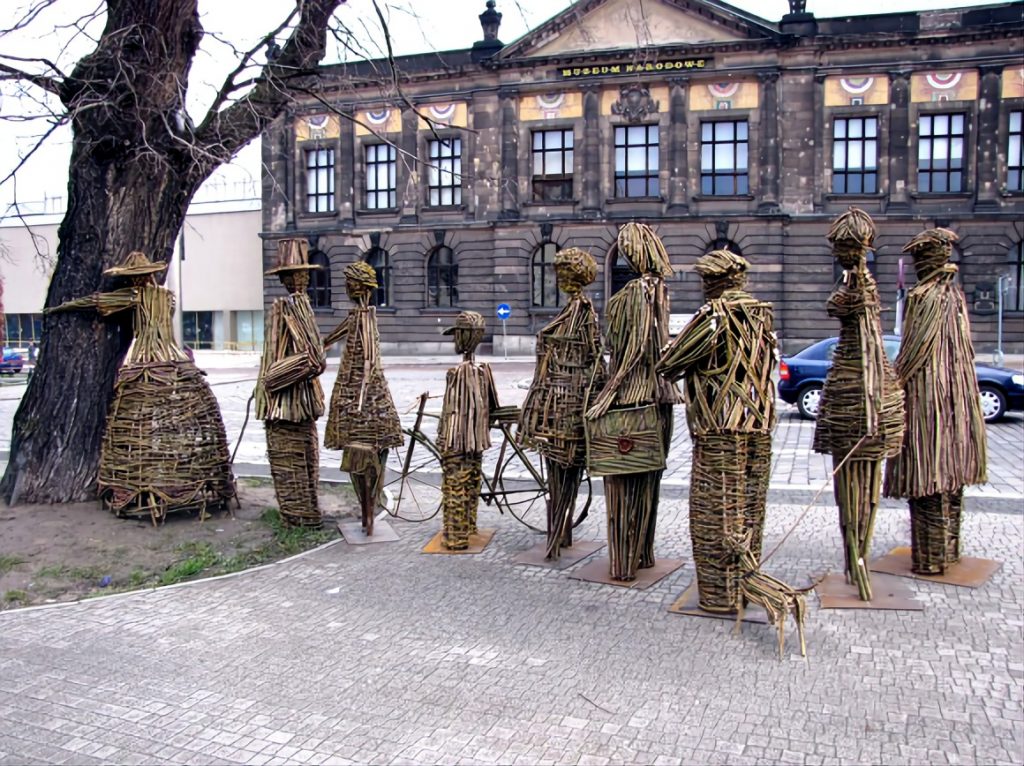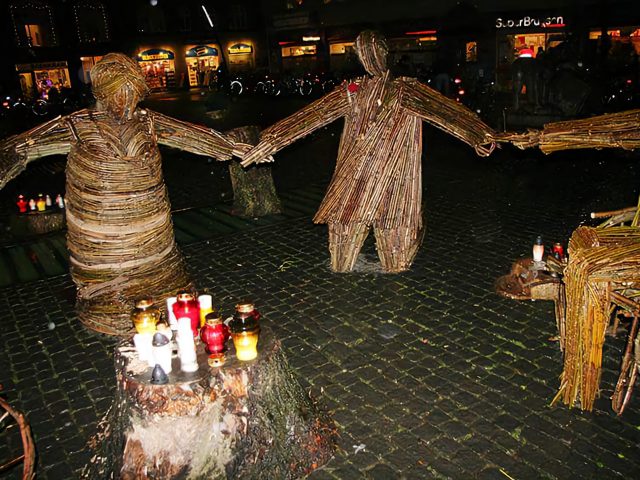The Expressionistic Environmental Sculpture of Wiktor Szostalo
The earth we share with millions of species is a constant source of inspiration for artists. It’s a mirror for the beauty, chaos, and generative potential we hold within, and aspire to emulate. In more recent decades, artists have contributed to the public dialogue on climate change to remind us of our connection and to urge audiences to act with empathy on behalf of all life. Wiktor Szostalo has carried this through-line for decades, embodying integrity from source material to production and outcome. His evocative artworks engender social responsibility that transcends politics and speaks to the heart of the matter

Szostalo was raised in Lithuania and Poland on bedtime stories of the saints told by his theologian father. Early experiences with museum collections made a deep impression, especially the emotional depiction of religious art from the Medieval period. Wiktor, too, remarks that he began using art as a way to express emotion, and then later, “to fight for something”. As a youth, Szostalo listened to harrowing stories of his father smuggling Jewish prisoners out of the Vilnius Ghetto during WWII, while his mother, a nurse, worked tirelessly to support the whole family. It instilled in him a work ethic and sense of justice that has stayed throughout his life.
Szostalo attended art school at the Kraków Academy of Fine Arts from 1972 - 1978, while gaining notoriety as a pro-democracy movement leader. In 1981, during a severe crackdown by the communist regime, Szostalo was jailed for 5 months and “encouraged” to leave Poland, landing in St. Louis, Missouri as a political refugee in 1983. He has worked as a professional studio artist ever since, crafting sculpture that crystalizes poetic moments into pure expression.
In 2005, at an art festival in Great Britain, Szostalo debuted “Tree Hugger Project”, an expansive environmental installation that continues to grow in resonance with our changing world. “Tree Hugger Project” depicts life-sized figures standing in line to hug the last tree on earth. The "Line" began with 9 figures and grows by 2 to 3 per year, to illustrate the annual increase of atmospheric carbon in parts per million. In 2017, there were already over 30 biomass figures at different stages of entropy, stubbornly waiting in Line to hug the Tree.
From 2008 - 2017, “Tree Hugger Project" traveled to nearly every UN Climate Summit and throughout Europe. It was installed permanently in 2017 at the sculpture garden Les Jardins d’Etretat in Normandy, France. Figures last from 5-10 years, decaying in plain sight, demonstrating the beauty of natural entropy and a “leave no trace” inherent value. "Tree Hugger Project" installations have appeared worldwide from the Pratt Sculpture Garden in New York, to the Burning Man Festival, to private environmental art collections in Moscow, Russia; Poland and France, to a summer school at a synagogue in St. Louis, MO.
The materials for “Tree Hugger Project” are sourced from the local environment, trees and bushes left from clearing trenches, irrigation canals, and invasive species. Sometimes the project uses rescued wood, fibers from houses destroyed by hurricanes or rising oceans. Szostalo chooses to make portraits of known local figures, adding layers of historical resonance that link the sculpture to its community.

One such figure, rendered in biomass, with burn marks on her dress, is Katrina Papisten. Her story is tied to the city of then German Stolp, now Polish Slupsk, where in 1701, she was burned for “witchcraft”, i.e. for being too female, too beautiful, too successful in business, and too adept at treating her local community as a pharmacist. Centuries later as a result of being included in one of the “Tree Hugger Project” installations, the city’s mayor took interest in her background and named a prominent roundabout after her. The dedication uplifts her story as a strong, positive community member, a gesture of reparations and positive reform of the social environment.
To speak of climate justice is timely, but to demonstrate climate responsibility is better. Part of Szostalo’s philosophy now includes planting trees to offset the footprint of his sculptural welding. Wiktor works in a wide range of materials including glass, wood, and steel. “The Whale” (2012) is an example of his large-scale metalwork and his ability to serve the landscape and community to enhance a sense of local identity. Szostalo built two whales, 25-feet tall and nearly 60 feet long, referencing a local legend from the Baltic Sea town of Rewel. Their forms create a kind of translucent drawing on the horizon, maintaining landscape visibility. Ribs and outlines converge into a gathering place where visitors can rest, or even climb, entering the mythic belly of the whale and gaining a novel experience unique to the town.
Another fascinating aspect of Szostalo’s career bridges his early influence in Medieval art and the needs of the American community. In the 1980’s, very few sculptures existed that represent black religious figures; Szostalo spent decades working with churches to fill this void, just one aspect of his artistic and social contributions. And at the intersection of environmental justice and the lives of the saints, he’s been commissioned for several St. Frances sculptures, like that of the historic cemetery of the St. Louis Ray Mission in California. St. Frances preaches to birds, who are wind chimes, his back to a tree. A large hollow allows visitors to place the ashes of loved ones and add name plates in remembrance, creating a meaningful ritual around death and renewal, natural and spiritual.
Across materials and storylines, Szostalo’s work reveals the human condition and its parallel in the environment. His expressionistic rendering of relatable figures assigns gravity and emotion to each work, making them timeless and important.




